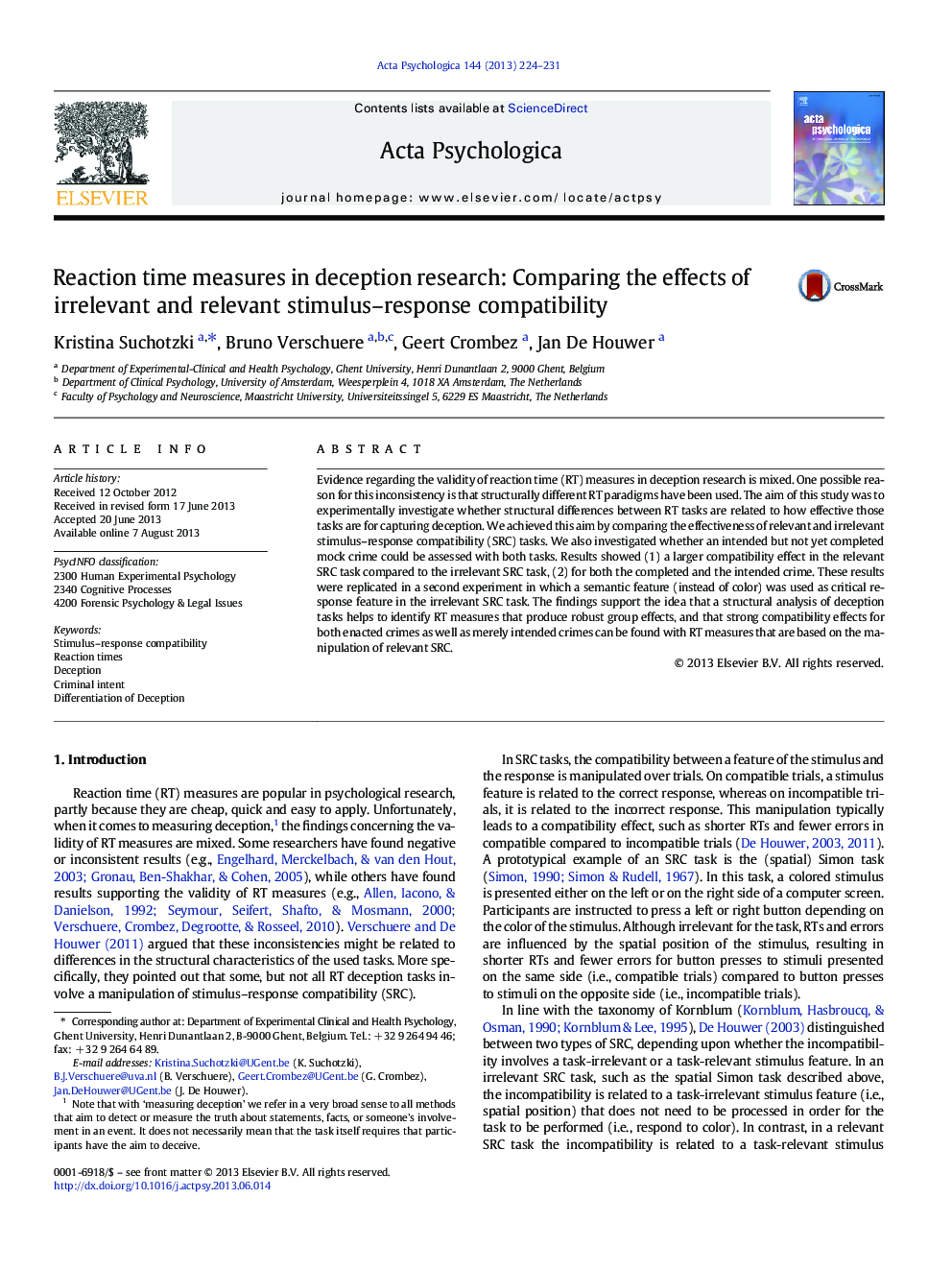| Article ID | Journal | Published Year | Pages | File Type |
|---|---|---|---|---|
| 10453767 | Acta Psychologica | 2013 | 8 Pages |
Abstract
Evidence regarding the validity of reaction time (RT) measures in deception research is mixed. One possible reason for this inconsistency is that structurally different RT paradigms have been used. The aim of this study was to experimentally investigate whether structural differences between RT tasks are related to how effective those tasks are for capturing deception. We achieved this aim by comparing the effectiveness of relevant and irrelevant stimulus-response compatibility (SRC) tasks. We also investigated whether an intended but not yet completed mock crime could be assessed with both tasks. Results showed (1) a larger compatibility effect in the relevant SRC task compared to the irrelevant SRC task, (2) for both the completed and the intended crime. These results were replicated in a second experiment in which a semantic feature (instead of color) was used as critical response feature in the irrelevant SRC task. The findings support the idea that a structural analysis of deception tasks helps to identify RT measures that produce robust group effects, and that strong compatibility effects for both enacted crimes as well as merely intended crimes can be found with RT measures that are based on the manipulation of relevant SRC.
Keywords
Related Topics
Life Sciences
Neuroscience
Cognitive Neuroscience
Authors
Kristina Suchotzki, Bruno Verschuere, Geert Crombez, Jan De Houwer,
